
Commercial Roofing Overlay
Work with Reputable Experts for Your Commercial Roofing Overlay

What is the Commercial Roofing Overlay Service?
Commercial roofing overlay is the process of installing a new roofing system over an existing roof without a complete tear-off. This cost-effective approach extends the roof’s lifespan and ensures protection. However, this type of roofing is only an option if the building has a single existing roof system, as building codes typically prohibit multiple layers.
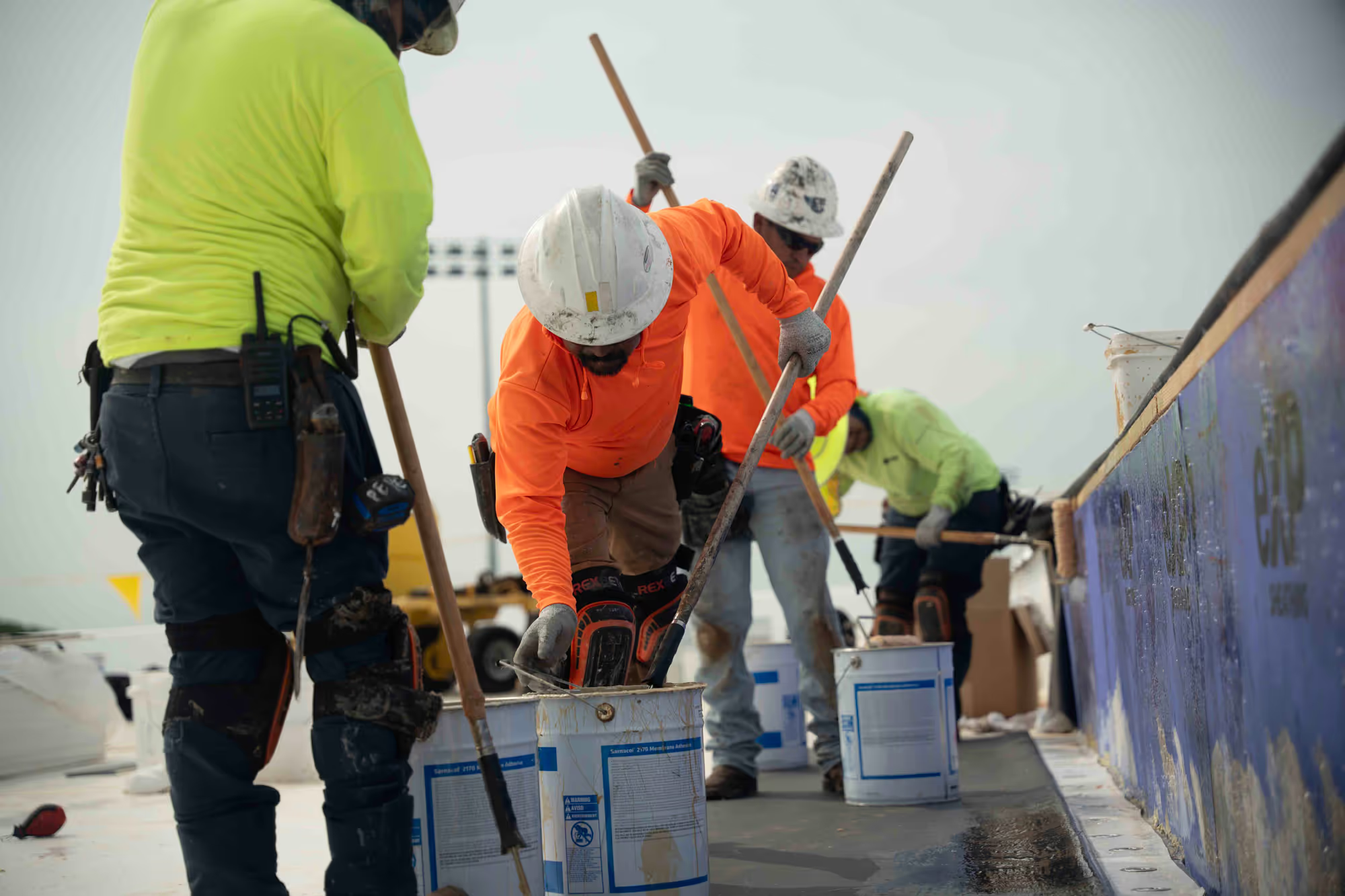
Why is this Service Essential for Commercial Properties?
This option can save businesses money on a roofing project, if applicable, because of the labor and material savings associated.
A well-maintained roof ensures protection against weather conditions and safeguards the occupants, structure, and assets. Furthermore, it often makes the building look better.

Applied Roofing Solutions’ Expertise & Experience
Applied Roofing has been around since 2011. We’re committed to expanding our knowledge base and delivering reliable results.
Our passion for innovation in the field shines through in our use of the latest materials and technologies for our roofing solutions. We’ve always been open to hiring and training new experts who deliver our results.
Signs that the Roof Needs Roofing Overlay

Persistent Leaks or Water Damage
If a commercial building has a persistent leak and water damage, it’s essential to conduct roofing overlay to minimize the spread of damage.

Visible Wear and Tear
Cracks, blisters, and missing roofing materials suggest deterioration, and while these signs might not indicate the risk of collapse, tending to them is essential.
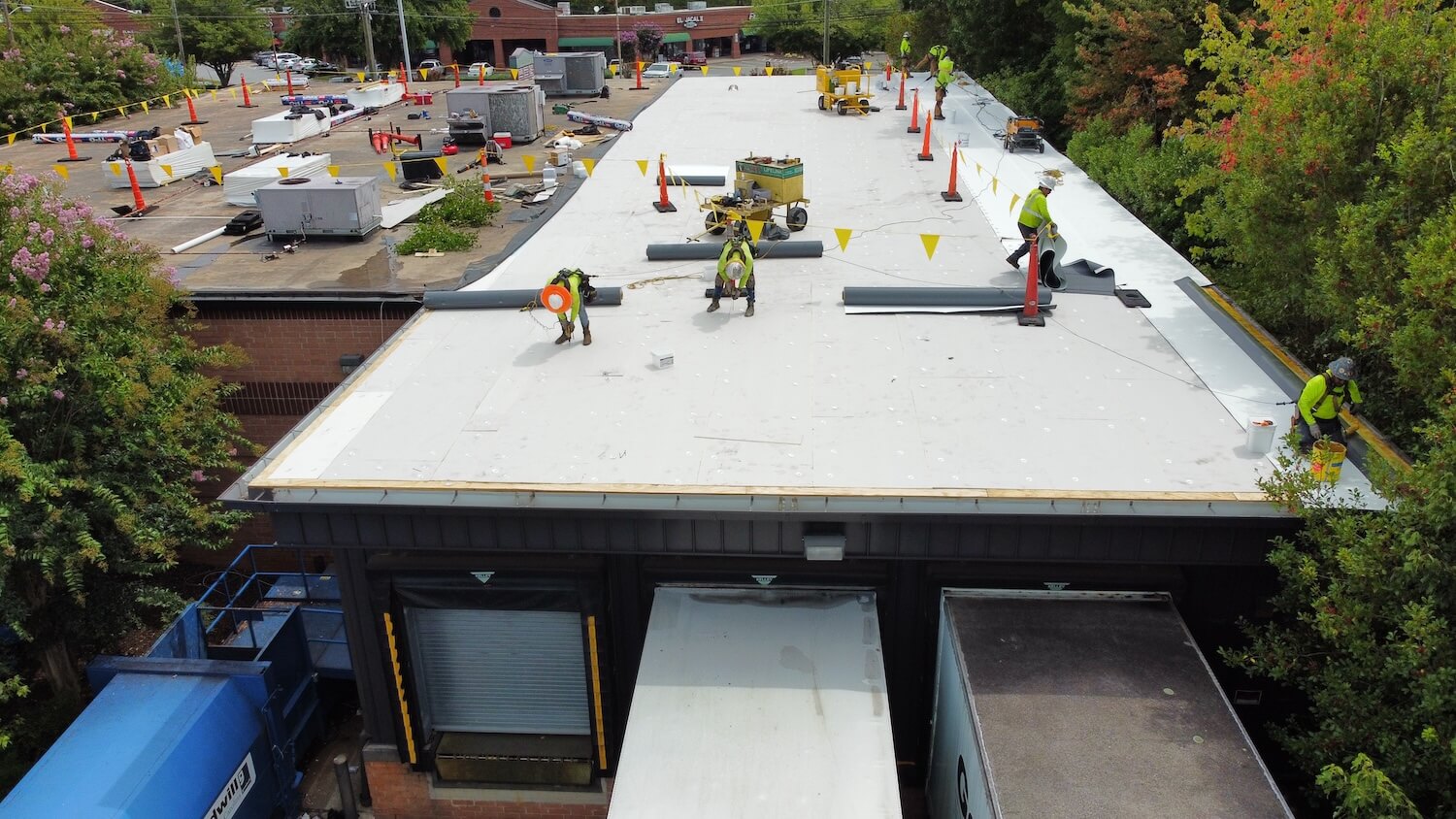
Increasing Energy Bills
Damaged or old roofs can have poor insulation, increasing energy bills.

Age of the Roof
Most roofs have a limited lifespan of 20 to 30 years. While there may not be visible damage or problems after that period, roofing overlay can be a smart investment.
.avif)
Frequent Repairs
If a roof requires frequent repairs, roofing overlay can be a great decision.
Commercial Roofing Systems Suitable for Commercial Roofing Overlay
.jpg)
EPDM (Ethylene Propylene Diene Monomer)
EPDM is a durable, flexible rubber roofing option for flat and low-slope roofs. It is weather—and UV-resistant.
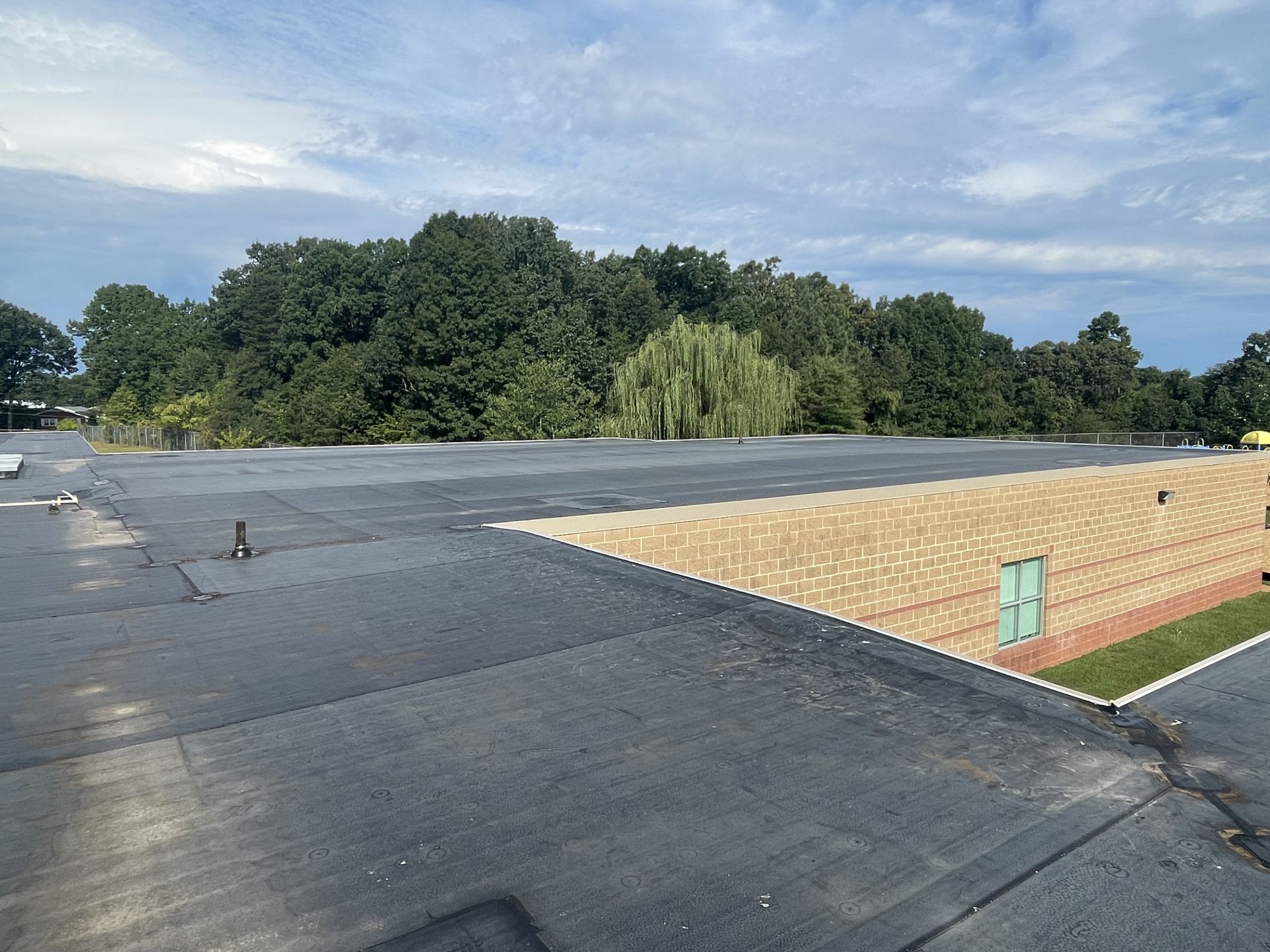
TPO (Thermoplastic Polyolefin)
If your building is located in a hotter climate, TPO is a great choice for an energy-efficient roof that reduces cooling costs.

PVC (Polyvinyl Chloride)
Industrial buildings require roofing systems that ensure additional safety. PVC is fire-resistant and durable, making it one of the best choices for buildings with heavy chemical exposure.

Built-Up Roofing (BUR)
BUR includes multiple bitumen layers and reinforcing fabrics, providing superior protection and longevity. It’s a good choice for flat roofs and has proven performance in delivering waterproofing and insulation.

Modified Bitumen
A durable, flexible roofing material with strong resistance to temperature fluctuations. Furthermore, modified bitumen can be additionally reinforced, and it’s an excellent option for roofs with high foot traffic.

Metal Roofing
Long-lasting and low-maintenance metal roofs are ideal for commercial structures with steep-slope roofs that require durability.
Benefits of Working with Applied Roofing on Commercial Roofing Overlay
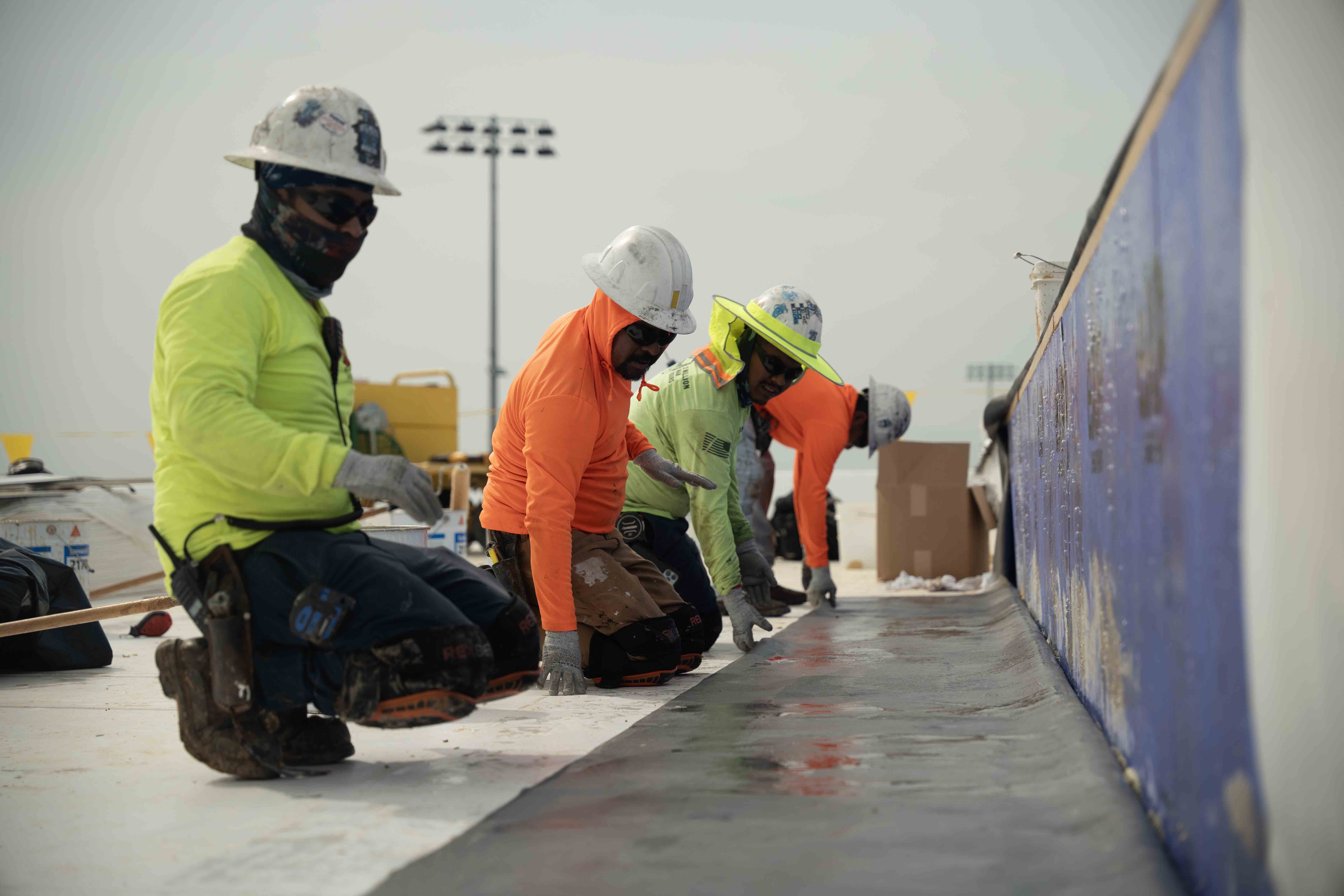
1. Customized Solutions for Your Building
Our team assesses your specific needs and recommends the roofing overlay solution best suited for your property. We provide customized roofing options depending on the region, architectural style, and building type.

2. Minimized Business Disruption
Many businesses need to be able to operate during the roofing overlay process, which can last weeks. We offer precisely that while delivering the roofing overlay system that you require.

3. Warranty Protection and Post-Installation Support
Of course, our job is not done once the roofing overlay is complete. Our commercial roofing overlay services come with industry-leading warranties and long-term support for peace of mind.
Process Steps

Initial Consultation and Inspection
The process of roofing overlay starts with us observing your roof carefully. We then determine its state and the best roofing system for your case.

Project Planning and Material Selection
Once the roof is properly inspected, we collaborate with engineers and architects to plan the project properly and choose the best material.
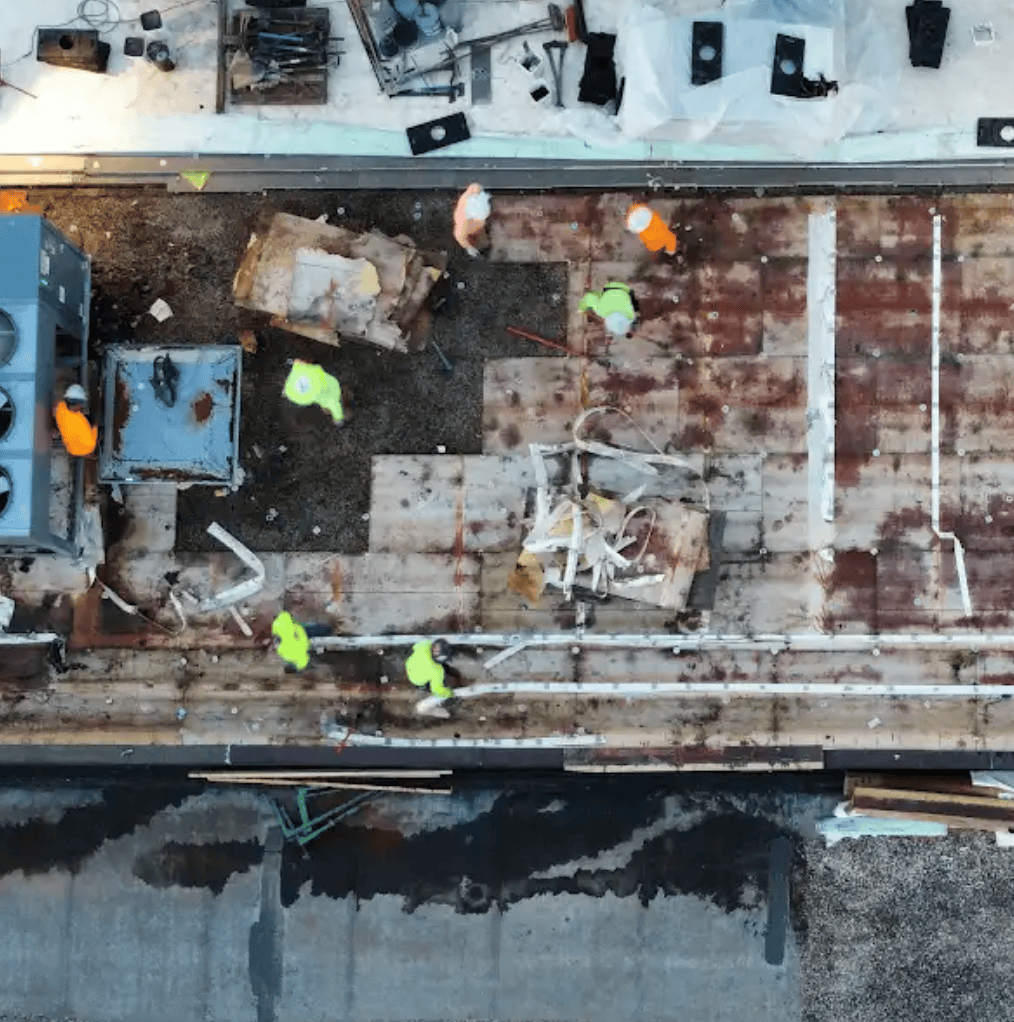
Preparation and Removal of Damaged Areas
Roofing overlay isn’t a walk in the park, and proper safety is essential. We commit to the safety of our employees and the building’s occupants. If required, any compromised roofing sections are removed or reinforced as needed.
.jpg)
Installation of New Roofing System
During this step, our team installs the chosen roofing system efficiently and professionally. The timeline for this step depends on the material we’ve collaboratively chosen for the project and on the current state of the roof.

Final Inspection and Cleanup
If a roof requires frequent repairs, roofing overlay can be a great decision. Once the new roofing system is installed, the only thing left is the final examination and cleaning up of debris. We leave your site clean and ready for business.
Partner With Us
Our team is ready to support you with any challenges or questions you may have.
FAQs
What is commercial roofing overlay, and how does it differ from roof replacement?
Commercial roofing overlay involves adding a new layer of roofing material over the existing roof, while a complete roof replacement requires completely removing the old roof before installation.
Is commercial roofing overlay more cost-effective than roof replacement?
Roofing overlay is typically more affordable than a complete replacement because it requires less labor and material removal.
What are the benefits of roofing overlay for commercial properties?
Roofing overlay extends roof life, improves energy efficiency, reduces maintenance costs, and protects against leaks and weather damage.
Can all roofs be overlayed, or are there restrictions?
Not all roofs are suitable for roofing overlay. A full replacement may be necessary if there are structural issues, excessive damage, or multiple existing layers. Furthermore, depending on the location, there could be legal restrictions.
How long does a commercial roofing overlay project typically take?
Many factors come into play. Depending on the material and the size of the building, roofing overlay projects usually take one week to a few weeks. Of course, some projects can take less than a week and more than a month, depending on the situation.




